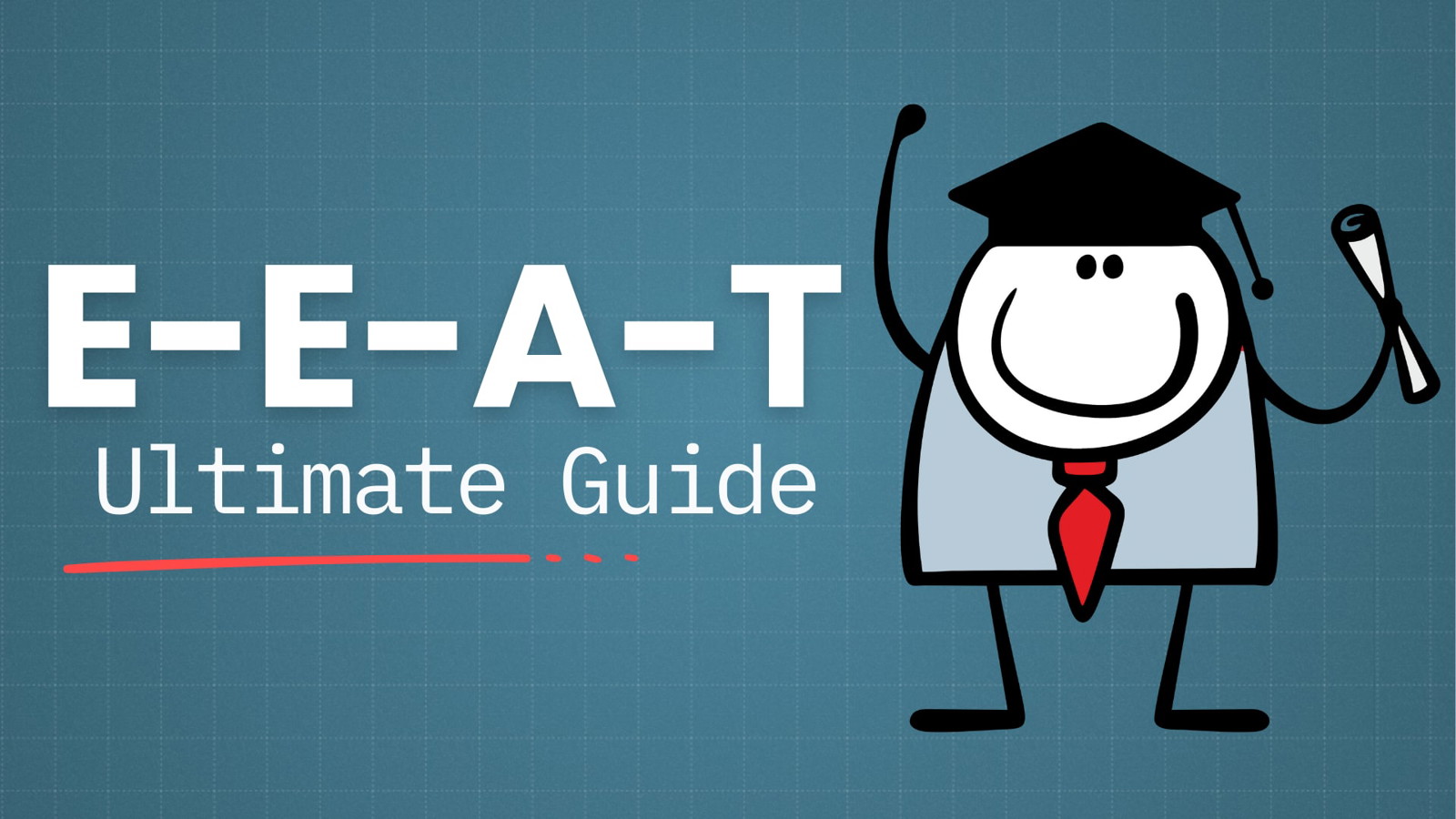Rich snippets are the most important thing happening in SEO today.
You may not feel any dramatic impacts yet, but slowly and surely, the way people use Google is changing.
That is both good and bad news.
We looked at the articles already out there, we looked at all the credible studies and we researched new data ourselves.
All of that to make this piece the only thing you need to read on the topic this year.
So, let’s not waste time – here is the table of contents:
- The growth of featured snippets
- Basic definitions: rich snippets, featured snippets
- The cons and benefits of rich snippets
- How to find featured snippet opportunities
- How to optimize for featured snippets
- Anatomy of a featured snippet
- Conclusion
If you’re not new to the topic of rich snippets, feel free to skim through the charts or jump to the sections that you care about right now.
Or read carefully and learn something new, that may impact your business this year.
Rich Snippets Are Taking Over …
Recently, we crawled and analyzed over 1 million search results. The study found that well over 40% of all top spots are taken by some sort of snippet placed there by Google.

When we repeated the analysis with high-volume keywords (over 1000 searches a month) and eliminated the likely branded queries, the result was astonishing – 65% of top spots were taken by the top featured rich snippets.
For reference, when Ahrefs did a similar study in 2017, they found figures that were much lower – about 12.3%.
One reason is that Ahrefs’ definition of “featured snippets” is narrower than ours, referring to just one kind of a snippet. But more on that later.
Rich Snippets, Featured Snippets. What’s the Difference
When we’re talking about “rich snippets” (also called SERP features) what we have in mind is any result that isn’t a traditional search result, i.e. the page or a website that ranks.
It can be a summary extracted from a website that answers the question, a widget such as a calculator Google shows when querying for maths, tweet or news snippets, shopping results, and so on.

As you can see on the pic above, Google now resembles a standalone content page with a bunch of widgets and a few search results.
Obviously, I’m using ad blocker so ads are missing but imagine if there were ads above all these results.
As of today, there are many different kinds of snippets. For this article we’ll go with the categories used by Ahrefs, as that’s our main SEO tool.
- Adwords: Google ads, you know these.
- Knowledge card: Covers a very diverse set of snippets from widgets and map features to definitions and data partnerships. Appears on top.
- Knowledge panel: Appears on the side as in the picture above.
- Image pack: Images.
- Top stories: Top stories can appear on top but typically you’ll find them on other positions too.
- People also ask: The expandable links as in the pic above.
- Featured snippet: There are three main types, a table, paragraph or a bulleted list. They take up the top spot.
- Shopping results: Showing products from different stores.
- Tweet box: Tweets, can appear as a featured snippet but only for Twitter related queries.
- Videos: YouTube links typically.
There is a bunch of different types of rich snippets and a few of them can take up the top spot. Featured snippet and knowledge cards are usually on top, tweet box, top stories and some others may take up the top spot too.
Here is a couple of more examples:

Different rich snippets can take up the top spot, often pushing top organic results below the visible parts. Here is one more:

The ‘shopping results’ at the top of the page falls under the category of ‘knowledge card’ if you use Ahrefs.
Like I said ‘knowledge card’ is rather a broad umbrella term that covers many different kinds of snippets that appear on top of the page.
And finally the featured snippet:

I’ll cut it short, you can read the definition yourself.
What is interesting about these is that Ahrefs found 12.3% of all non-branded search queries display this on top of the page.
As stated before, our study showed that 40% – 65% of top positions are taken by one of the snippet categories, including featured snippets.
Obviously, these little extracts is what SEOs care about the most, as they steal the query, grab attention and provide instant answers.
Let’s have a look at where we are now, two years after the Ahrefs study.
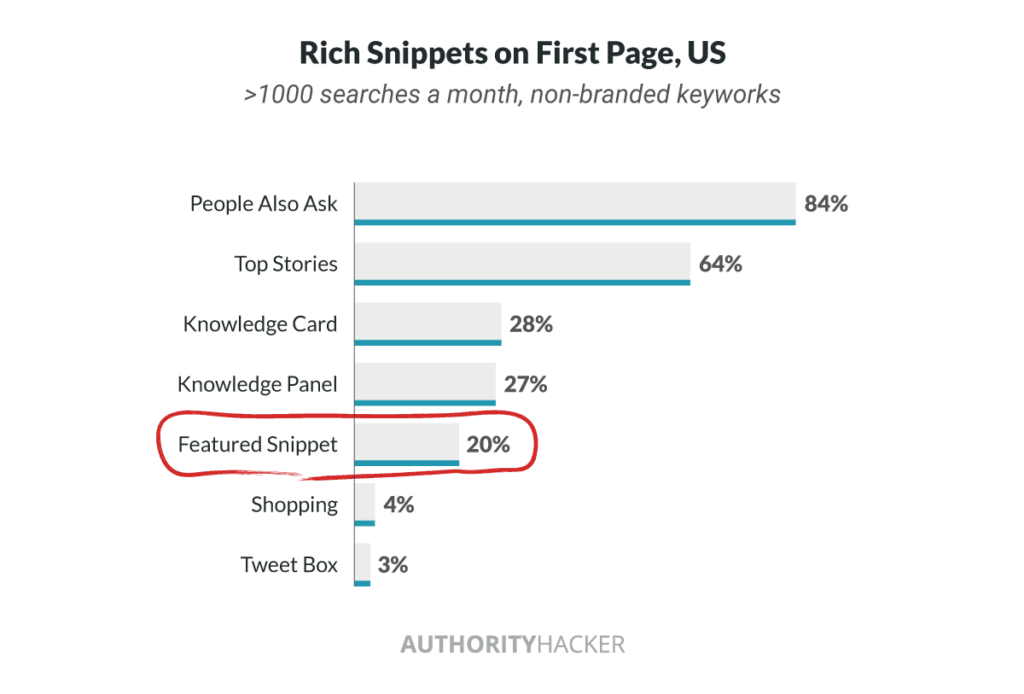
Roughly 50% growth, for featured snippets alone. The trend is clear.
Featured Snippets: Good or Bad News
Google is an advertising company. That means, it gets paid for showing ads on its websites.
It doesn’t get paid for driving traffic to your website, but for driving it to whoever pays for the featured ad on top of the search results page.
That means the search engine wants to make as many people stay on its pages as possible, to make money while keeping the user (not you, the content creator) happy.
And that’s the controversy with featured snippets. You create content, Google gets the benefits.
At the same time, Google still needs to keep publishers happy enough or they won’t have good source material to scrape from.
Plus, the looming of some kind of EU law preventing them from using your content is always hanging over their heads.
So they need to go slow with this.
Many SEO gurus are selling these developments as some great thing that is an opportunity to steal the top spot.
Like many others, I’m not buying it right away.
Consider this – like most people, thanks to this snippet, I haven’t visited a single sports website in the last two years:
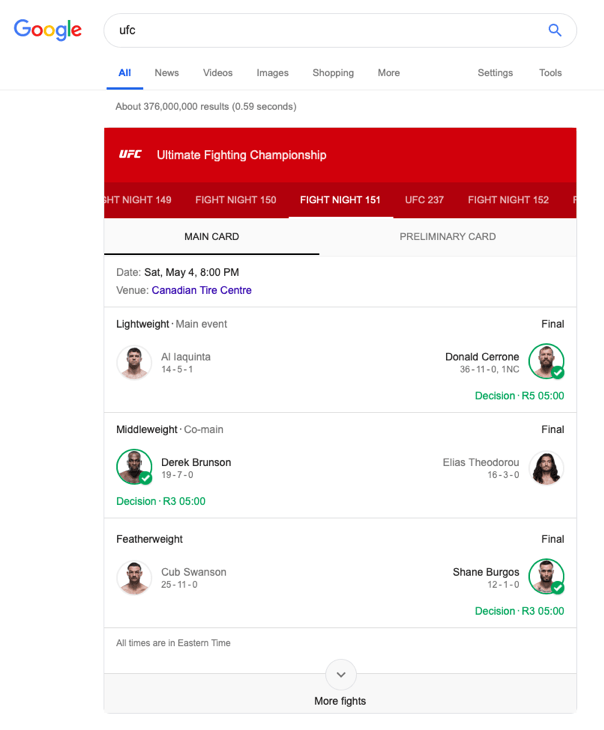
There is, however, more to it. The reason I used the words “ right away” in the same sentence as “I’m not buying it” is that gurus are also right.
But it all depends on the query.
As shown in our SERPs study, the top position gets the vast majority of the traffic, while everyone else gets the scraps.
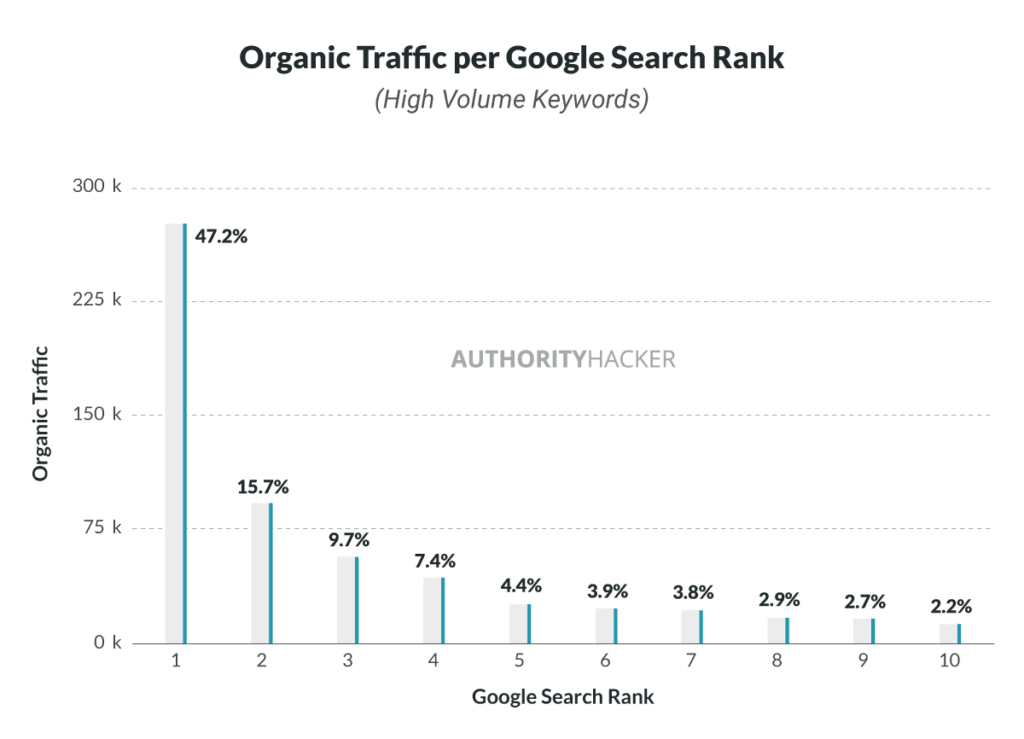
The Ahrefs study has established that featured snippets can steal over 30% of the click-through rates from the top result.
So for the keywords that perform well for you, you might actually be able to get ahead, secure the snippet for you and benefit from it.
You might even be able to steal it.
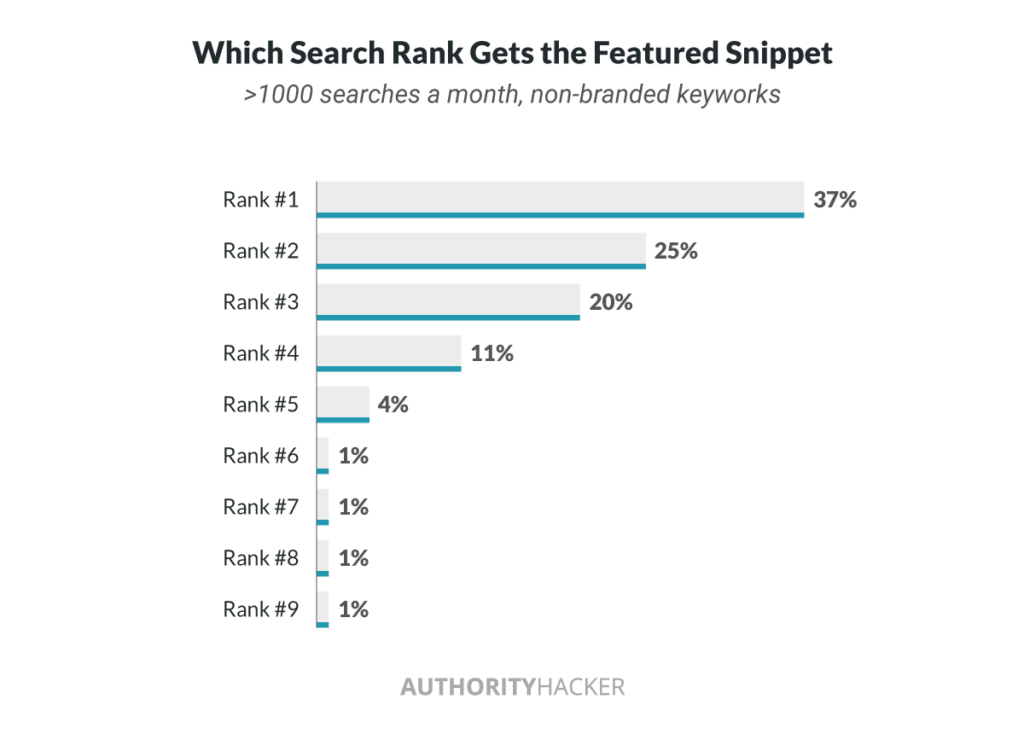
Our study of 500,000 search results shows that well over 60% of all featured snippets are “stolen” by other than the top ranked website.
As you add up the numbers, taking away 20% of CTR from the top ranked page can be quite a lucrative achievement.
And many SEOs have reported a boost in their traffic.
Another interesting observation we noticed in our analysis was that different searches for the same keyword result in different rich features.
Querying the same keyword from different browsers, with different language or locations settings will yield different snippets.
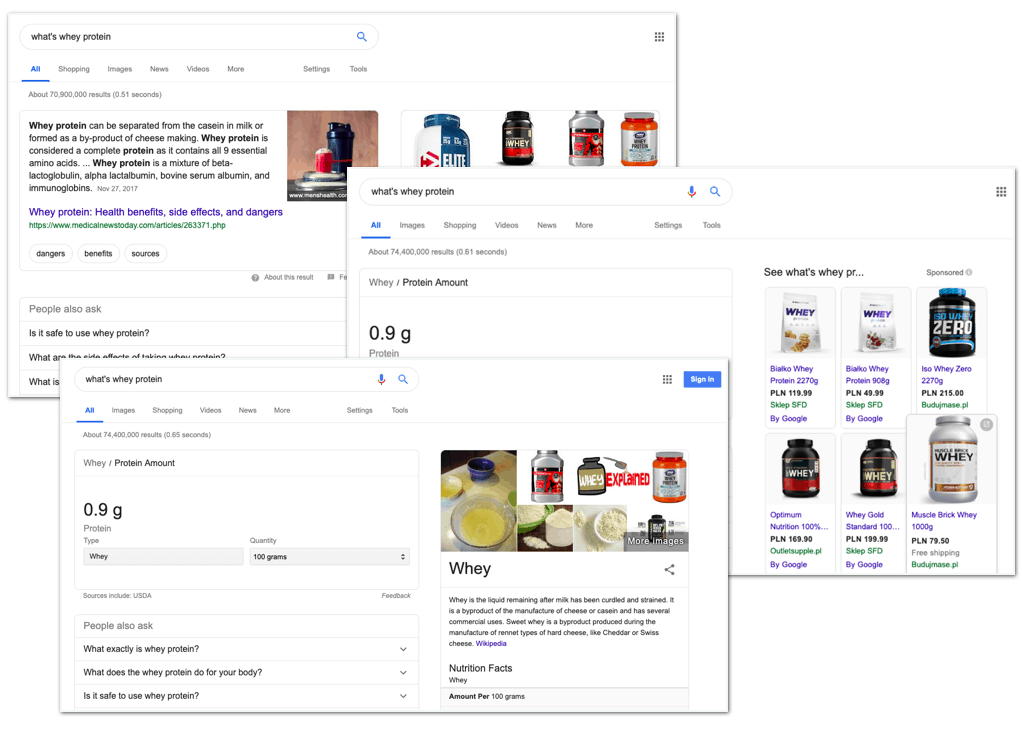
Here is a good example. I searched the same keyword from Safari, Chrome and Brave browser at the same time, all yielded different SERP features.
I don’t think the browser type matters, rather it’s the different default settings for search, location, privacy and so on that Google adjusts its search engine to.
Indeed, our study has confirmed different geographies yield different results too.
We took 50,000 random long-tail English language keywords, that had a minimum of 1000 searches a month and looked at the results from the US, UK, Canada and the Netherlands.
This is what we’ve got:
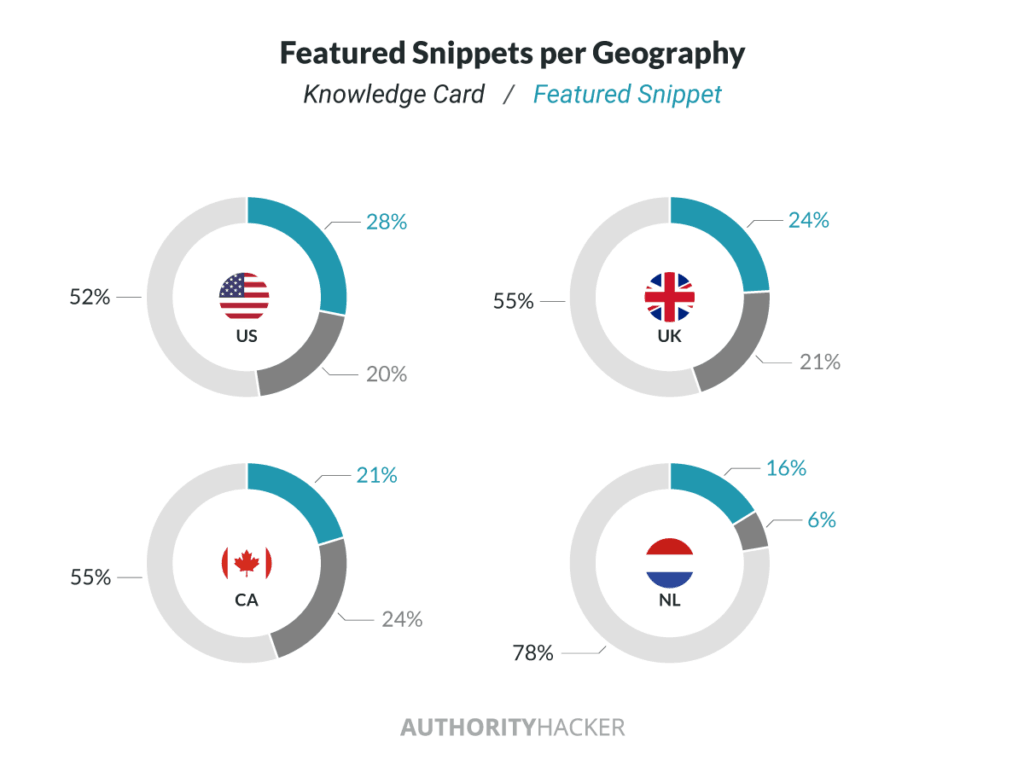
We’ve also established in the SERPs study that the volume makes a difference i.e. higher volume keywords show more snippets. To my knowledge, this has been observed in other studies too.
Obviously, running queries for the same English language keywords in Canada will show lower volumes compared to the US. But we wanted to check anyway.
So we have different volumes per geography and different snippets too.
But what does all of that mean?
It means there is plenty of opportunities and a premium in CTR to be acquired, as long as you already rank in the top 10.
Let’s get a bit more actionable now.
How to Find Featured Snippet Opportunities
The best way to find featured snippets opportunities is to use Ahrefs (review). As our readers know, we use Ahrefs for most of our SEO work, so we are going to use it here once again.
There are a bunch of ways to go about it.
As a healthy sense for strategy suggests, it’s best to start with the low hanging-fruit. In other words, you want to find the opportunities you already qualify for.
For that, you’ll need input your URL in site explorer -> organic keywords.
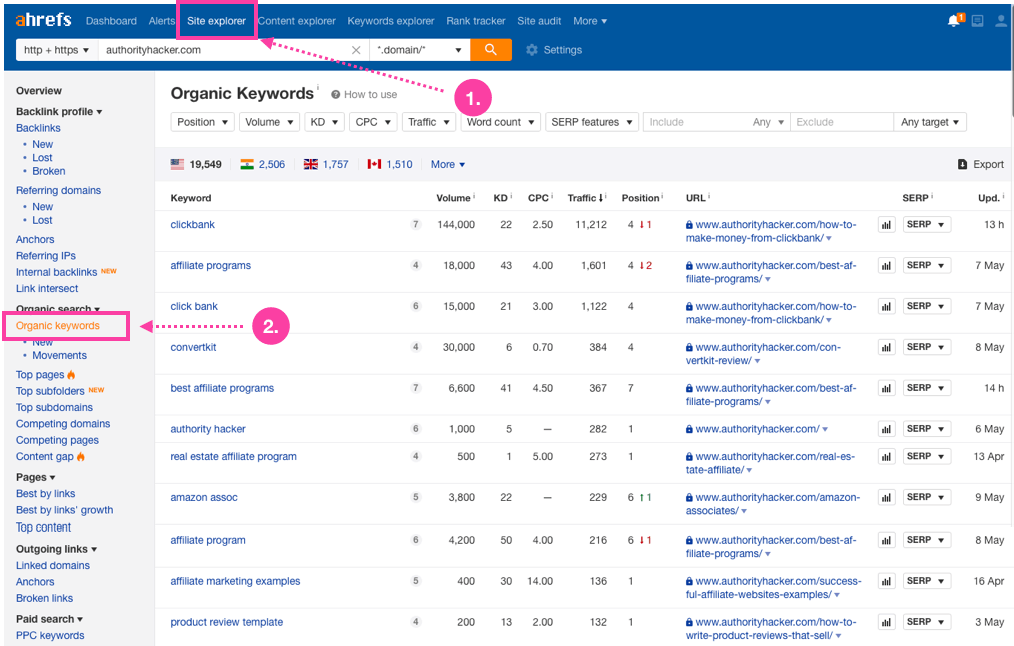
As previously shown, you’ll automatically qualify for featured snippets if you rank in the top 10. This has been confirmed by other studies as well.

So you look up your top keywords where you rank <= 10 and head over to SERP Features to filter out what you already own, and what’s left to be taken.

The result you get is a list of queries that already have featured snippets and where you stand a chance to take it over.
It’s nice to note that Ahrefs tells you which snippets you already own by putting the icon on the line of the query:
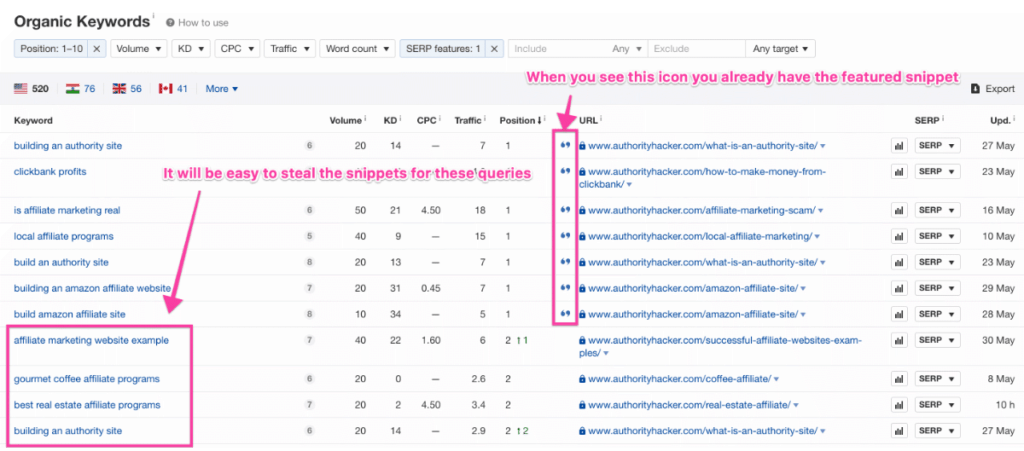
I suppose it’s a good idea to put all of these in a spreadsheet. You can use the Export feature in the top right corner.
Having seen many featured snippets while doing the studies for this article, it appears to me that any non-branded query has a capacity to become a featured snippet.
However, the most common ones contain these words according to our research:
| How to | What (is) | Best |
|---|---|---|
| Can | vs. | Make |
| Top | Get | List |
So pay attention to any queries that are structured around these. However, any plain keyword that can yield a definition such as “affiliate programs” will yield a featured snippet too.
Another thing you don’t want to miss is doing this search for multiple geographies. As shown in our study, different location settings yield different rich snippet variations.
You should know what markets are relevant for you. If you’re only marketing to let’s say Canadians then it won’t make much business sense for you, of course.

In other words, just because you own a featured snippet in the US, it doesn’t mean that’s the case for anyone who searches the same keyword from the UK.
Finally, you want to filter out and look up all the “people also ask” snippets as they provide more featured snippet opportunities you might easily acquire with a little work if you already rank for the main keyword.

The cool thing Ahrefs’ Site Explorer is that you can perform the same analysis for your competitors or big sites in general and find out more ideas for keywords with featured snippets they own to get some content updates inspiration.
So we’re done with picking the low hanging fruit.
Now, let’s say you’re doing your keyword research for new content or to optimize the existing one. You may want to see where you can compete for the featured snippets too.
This is made easy if you head over to Keyword Explorer -> SERP Features.
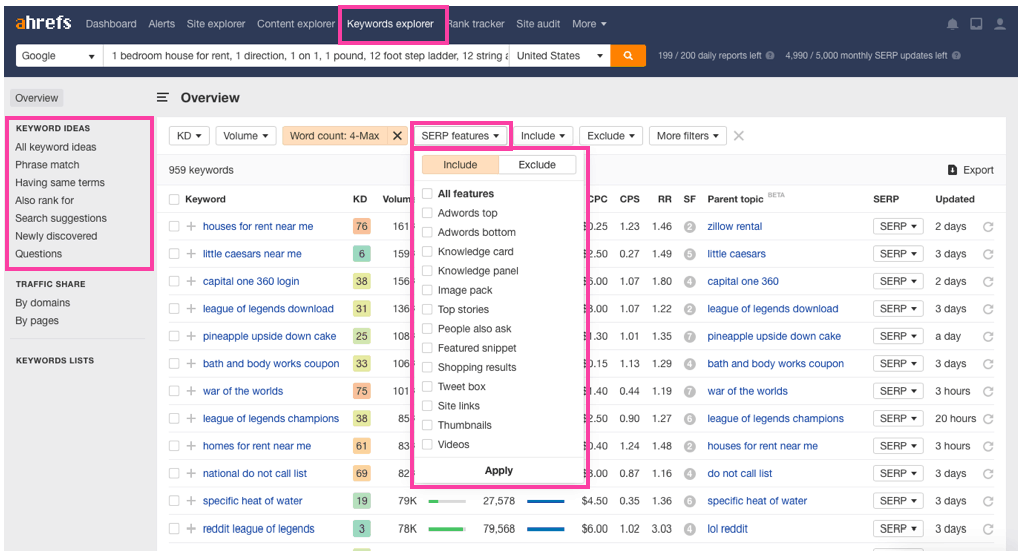
So here you can filter the keywords that yield featured snippets and high volume keywords that qualify for one but don’t yield it yet.
As mentioned before, higher volume keywords are more likely to return rich snippet results.
Finally, you can go on and look up more ideas for new keywords as well as question queries which, by the nature of being questions are most likely to qualify for featured snippet.
How to Optimize for Featured Snippets
So you let’s say you have your content, keywords, URLs, and you’ve exported all of that into a spreadsheet.
Now, the goal is to optimize your content to appear in these snippets.
As it is with all SEO, we have no clear idea of how exactly Google’s algorithms work. But there’s plenty of data easily accessible so it’s not too hard to add a bit of clarity.
The best way to make things a little bit clearer is to remove the clutter. So let’s start with cleaning up.
In our 1.1 million SERPs study, we already stated we believe the ideas of Google relying on sophisticated AI and NLP algorithms are most likely nonsense.
Namely, because these technologies are quite primitive, and all data rather suggest that Google does a great job collecting tons of basic data like keywords, links, etc. and organizing them.
So we did a separate study on pages that show in featured snippets and compared them with the remaining URLs in the top ten results for each keyword. We looked at:
- Page Speed
- Wordcount
- Keywords
- Links / Referring Domains
- Domain Rating
All of these we found to correlate with higher ranks. But perhaps, one of them has more weight when it comes to Google picking your page for a featured snippet?
Here are the results:

We looked at Google’s PageSpeed Insights, Keywords in <h> tags overall and each kind, in particular, word count of the page linking domains and Ahrefs’ Domain Rating which measures the overall domain authority.
All of these correlate with higher ranks in Google results and considering the bulk of featured snippets come from top 3 positions it’s reasonable to expect they’ll rate a bit higher.
Nonetheless, these metrics don’t matter.
I would just add that we didn’t even expect them to, except for the page speed as Google Voice uses featured snippets to answer majority of voice search queries.

Length of content was about 15% higher than the average for the top organic result, but in our previous study, we assessed the length matters only as much as it allows you to have more keywords at a non-spammy density.
All these metrics matter in the sense that they put you in the top 10 results and therefore you get qualified for snippets. But it’s not what makes Google take out an extract and feature it.
Anyway, here’s an interesting comment from AuthorityHacker’s Facebook group.

I’ve been playing around with Natural Language API also and I too found it very basic. I think it’s quite reasonable to think that this is how Google picks content for featured snippets.
So here’s our assessment – Google ranks top 10 pages using quite a reliable algorithm. From those top 10 pages it needs a short snippet that most resembles an answer to the query.
It’s not rocket science. There’s 150,000 words in English language. That’s not a huge dataset to work with.
Moreover, you can group most words into synonyms, antonyms, nouns, adjectives, verbs, passive, active and so on.
So what’s my point here? Take a look at this:

The top result does everything right. The title matches the keyword, the URL too, there are keywords in the text, it’s long and has tons of links … so, it’s the number one.
Yet, success.com beats it with the featured snippet.
If you look at Ramit Sethi’s article however, it doesn’t provide a short, straightforward piece of text that can be qualified by a simple algorithm as an answer.
In other words, what matters is that in your content you actually provide a snippet that Google can recognize and instantly grab.
That means, Google will look at simple words, a keyword, a semantic structure the text length and composition that will fit in the snippet.
The Anatomy of an Average Featured Snippet
Simple things matter.
Just as Abhi found out that changing one word from “unveiled” to “demoed” made Google change the category from news to something else so it is with featured snippets.
So we narrowed it down to two things:
- Providing the snippet within your content
- Semantic structure
So what does the average snippet look like?
Analyzing several thousands of snippets ourselves and looking at other studies too we found the typical anatomy is a <h2> or <h3> tag, followed by about 50 words, or 300 characters, in total and a picture.
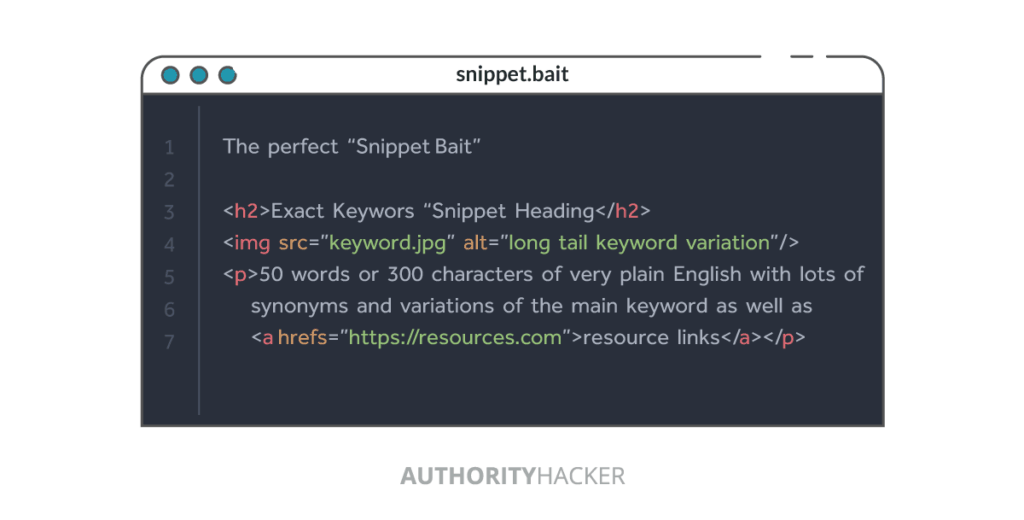
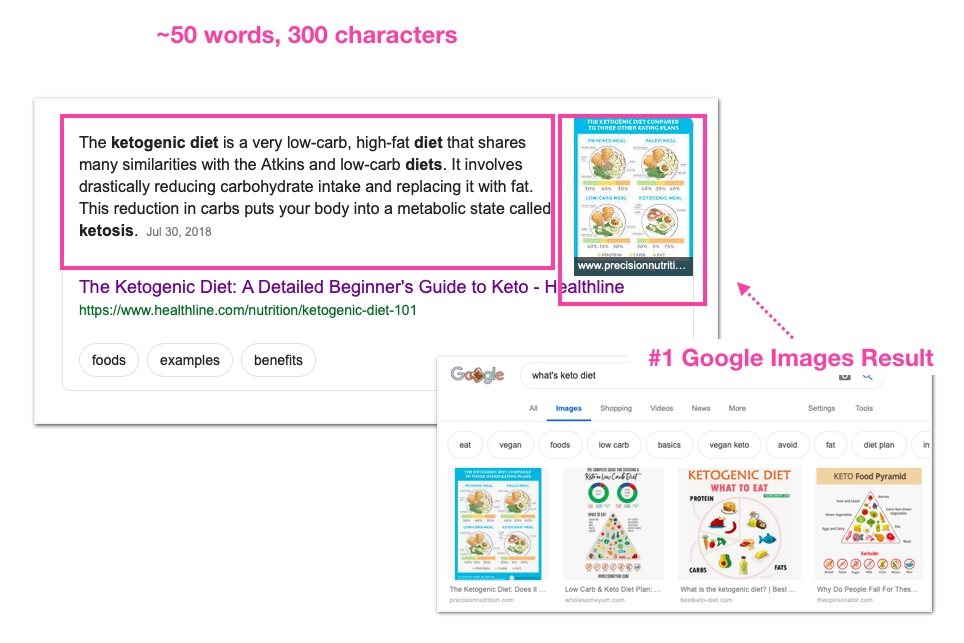
Let’s check out the actual content of the article:
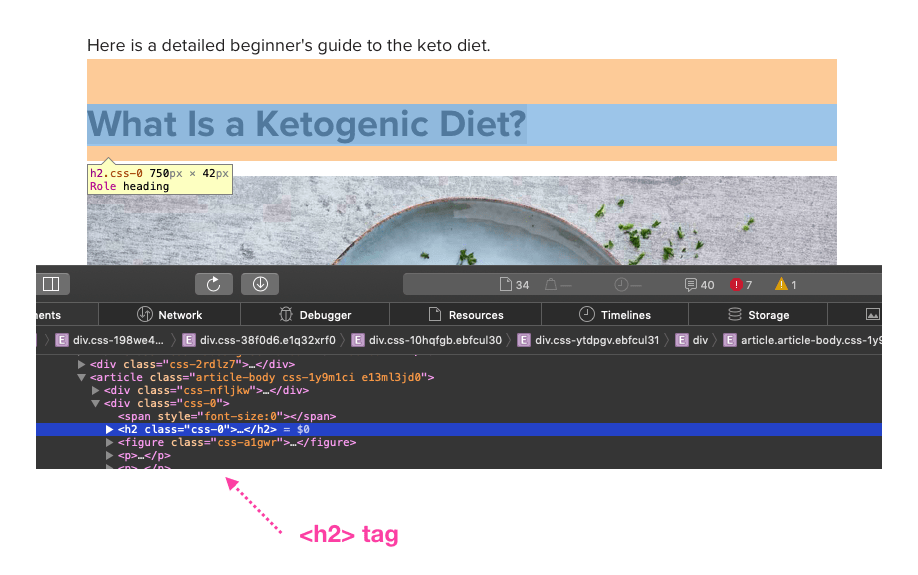
Then there’s a simple answer and a bunch of links as a reference. As for the reference links we found them to be quite a common element in many articles that get featured snippets.
Perhaps, that’s why Wikipedia does so well in grabbing rich snippets.
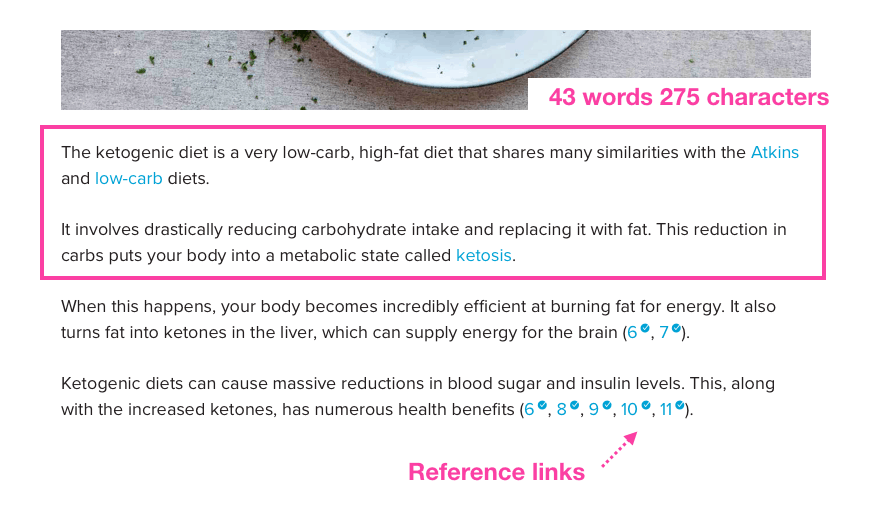
A good engineer will always find the most straightforward solution.
So when you look at the content inside the featured links you’ll find that Google doesn’t do much work extracting the content for the snippet rather than taking already existing snippet-like content.
For that reason Google likes clean, structured data.
Clean, structured data means you have a solid HTML structure that makes logical sense. The structure should tell Google stuff like “here’s a pic, here’s the title, here’s the answer”.
Hubspot does it quite well – in some articles they simply highlight the snippet part. This is also known as “snippet bait.”
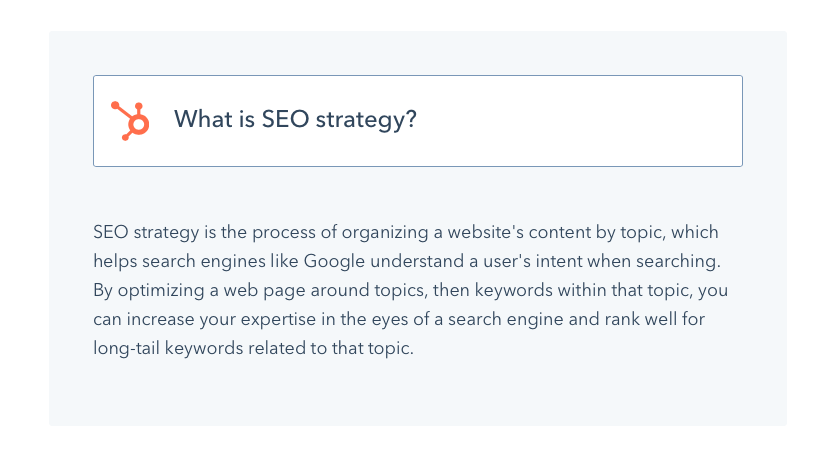
In fact, Google has quite an extensive documentation on structured data and even a couple of helpful tools to help you clean up your website.
It can be found on this link and you should read it.

So let’s have a look at a semantic structure. What I mean by that is that Google uses a simple language processing, it recognizes basic words, synonyms and structure.
It’s most reasonable to assume it aims to recognize pieces of content that most resemble a logical structure of an answer to a particular kind of a keyword.
Let’s take our example. What would an answer to “what’s keto diet” look like from the computer program’s point of view?
First, I’d point out that “keto diet” would be a keyword here, while “what’s” represents a generic adjective that determines the format of an answer.
The answer would probably start with something like “the [keyword] is” – this is easily recognizable.
What would you make this algorithm look for after that? It can be a thing or an activity. So you’re looking for a noun. A noun can be preceded by an adjective to specify an attribute.
Most standard computer algorithms are sequential, that means you look for an option A and if that doesn’t validate you go with option B, then option C and so on.
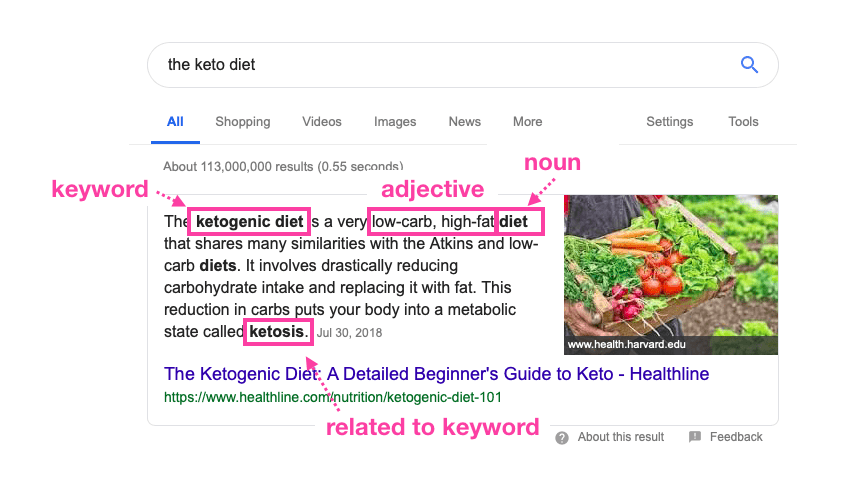
Option A is usually what you really want, it’s the best, fastest solution (e.g a match if you’re seeking a pattern).
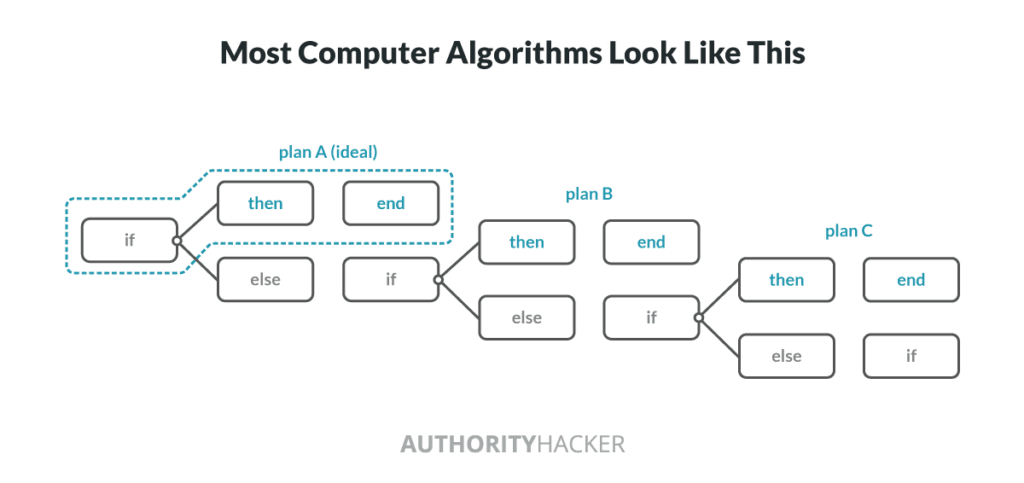
My point is: if you’re designing something that is to be processed by a computer algorithm (like most SEO), give it the simplest, fastest solution you can think of.
Therefore, you should follow a basic grammatical structure and provide the simplest, most natural 50 word answer as if speaking to a 5 year old.
That, in our hypothesis gives you the best chance to have your snippet bait on top of that sequence and even steal snippets from others.
For example, what would be a logical answer to a query that starts with “how to”?
“How to” implies you’re going to do something. Therefore it would be an active form, that begins with verbs. It could be a couple of paragraphs or a bulleted list.
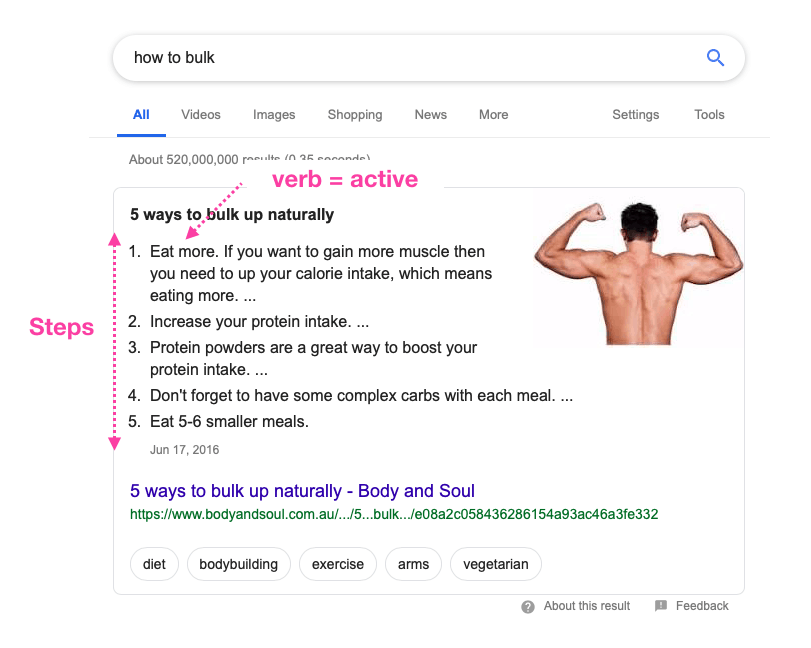
So if I was going to write up a featured snippet, I would head over to Ahrefs, filter out all similar queries look at most the common semantic structure.
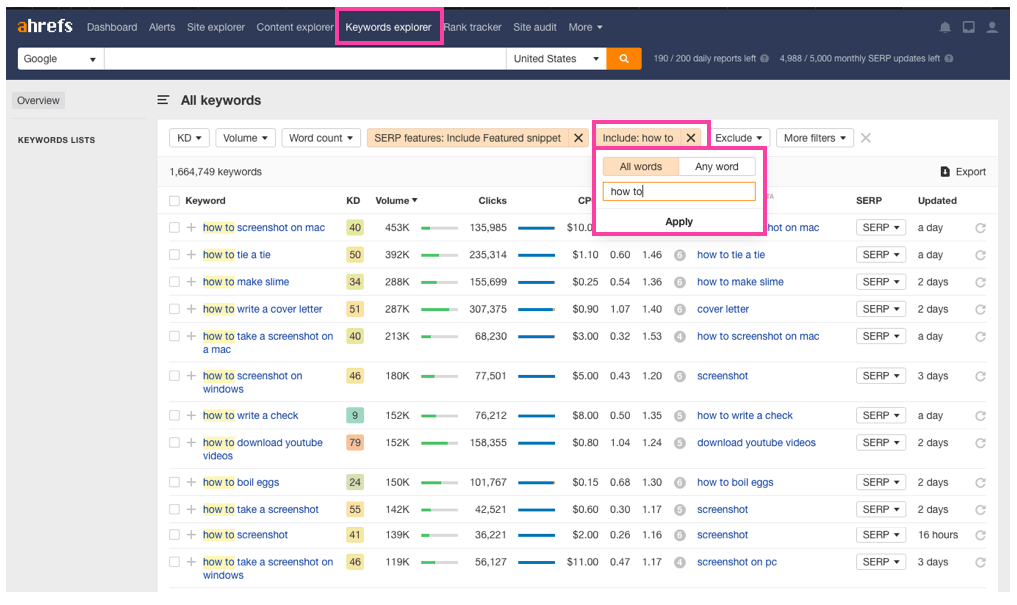
I would also think about what’s the best way to answer the question. Is it a bulleted list of instructions? A couple of paragraphs? An instructional YouTube video?
I would ask myself, what is the most common structure of such an answer in a natural language in terms of grammar. That is tense, active/passive form, verbs, nouns, adjectives, etc.
I would look at it as if I was an algorithm seeking patterns.
Then I would write a simple answer a 5-year-old can understand in 50 words. Or go on and make a video, a table, a list, and so on.
Obviously, I would look up at what are the most common snippet types with Ahrefs for that particular query, before.
Conclusion
As Peter Thiel states in his book, Zero to One, Google is a monopoly disguised as a tech company.
Most people look at Google and think Google voice, Android, self-driving cars, Gmail, and obviously Search.
If you look at their quarterly fiscal results you will see that most of their revenue comes from ads.
And that’s all that matters to Google as it’s a public company and all their shareholders care about is financial performance, else management will have to go.
Let’s take a look at their last quarterly results.
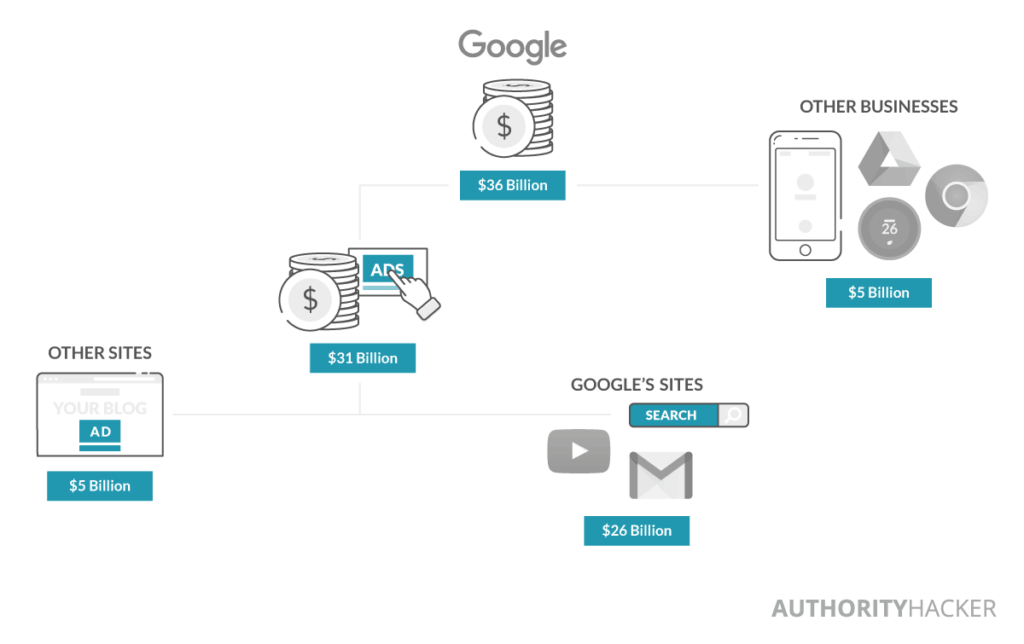
Google made $36 billion, $31 billion came from people clicking on ads and of those $31 billion, $26 billion came from people clicking on ads on Google’s websites (i.e not Adsense ads).
The other $5 billion came from stuff like phones, but that’s not profits … considering you need to pay manufacturing costs, phones will never be as profitable ads, they probably even lose money considering the thin margins hardware has.
What’s my point?
Google is ads. Everything else is just a byproduct of their success in making more people browse Google’s websites, not yours (unless you’re buying ads of course).
Grand strategy is the art of looking beyond the present battle and calculating ahead. Focus on your ultimate goal and plot to reach it.
So the case with rich snippets is that there will be more of them and they will lead to fewer people browsing through the results as they’ll just use Google’s snippets or voice assistant.
Google’s goal here is to keep people on their sites to increase their ad revenue.
At the same time, new traffic opportunities like Google Discover are emerging and replacing some of that lost pure search traffic.
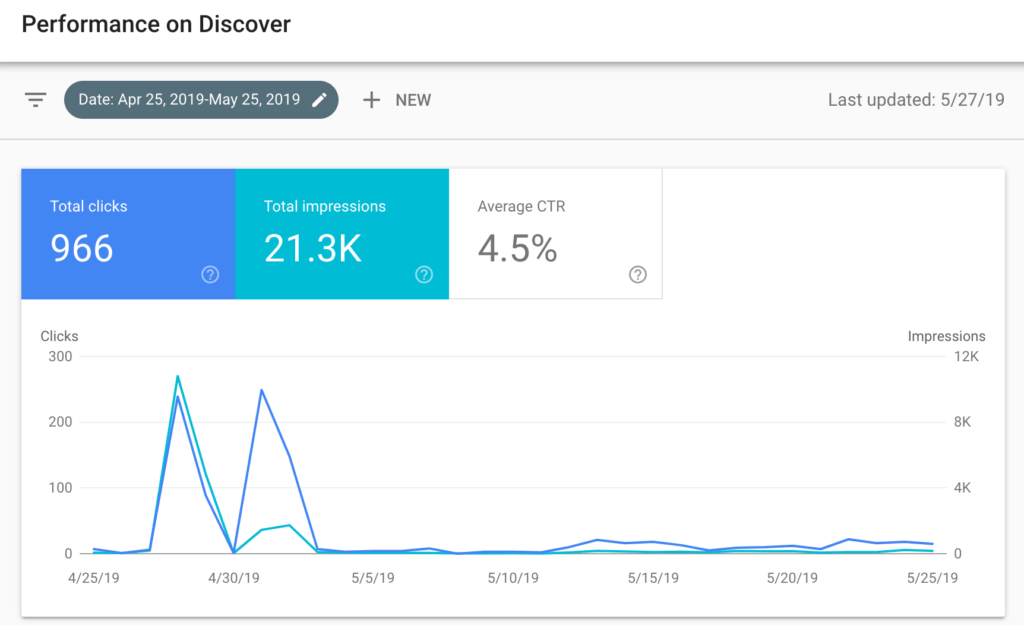
You also have to take into account that search is still a growing market.
Sure, most developed populations have internet access at this point.
But the number of searches per day we are doing is still raising massively compared to just a few years ago.
Mostly because people’s time spent on their phones is still growing rapidly.
It’s not uncommon for people to have 5 hours screen on time at the end of the day plus the time they spend on actual computers.
And this growth could partially or completely offset the loss of click through rate per query in terms of raw traffic.
So yes, featured snippets mean less clicks per search.
But it does not mean your Google traffic will necessarily decrease.
Plus, if you apply the tactics we talked about in this post, you might be able to snag some traffic away from huge sites squatting the #1 spot for big keywords.
Have you been optimizing for featured snippets?
We’d love to hear about your experiences in the comment section.



